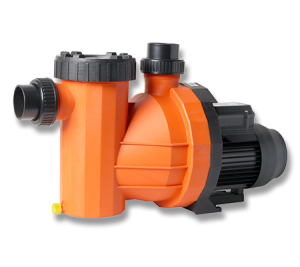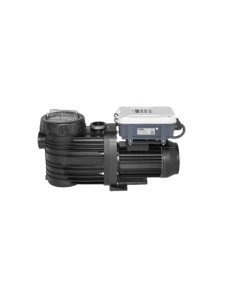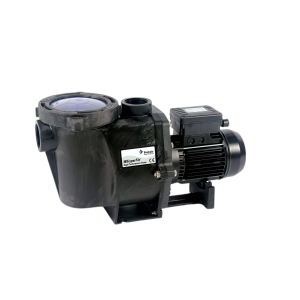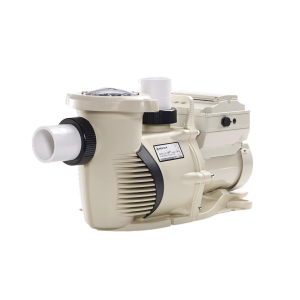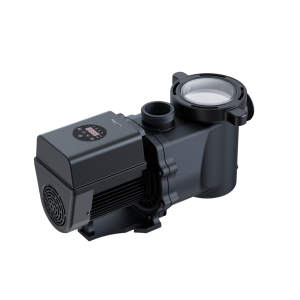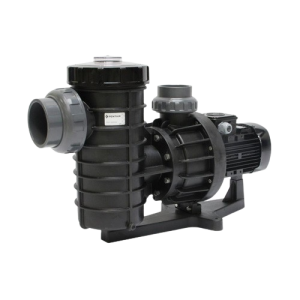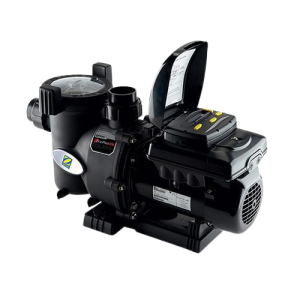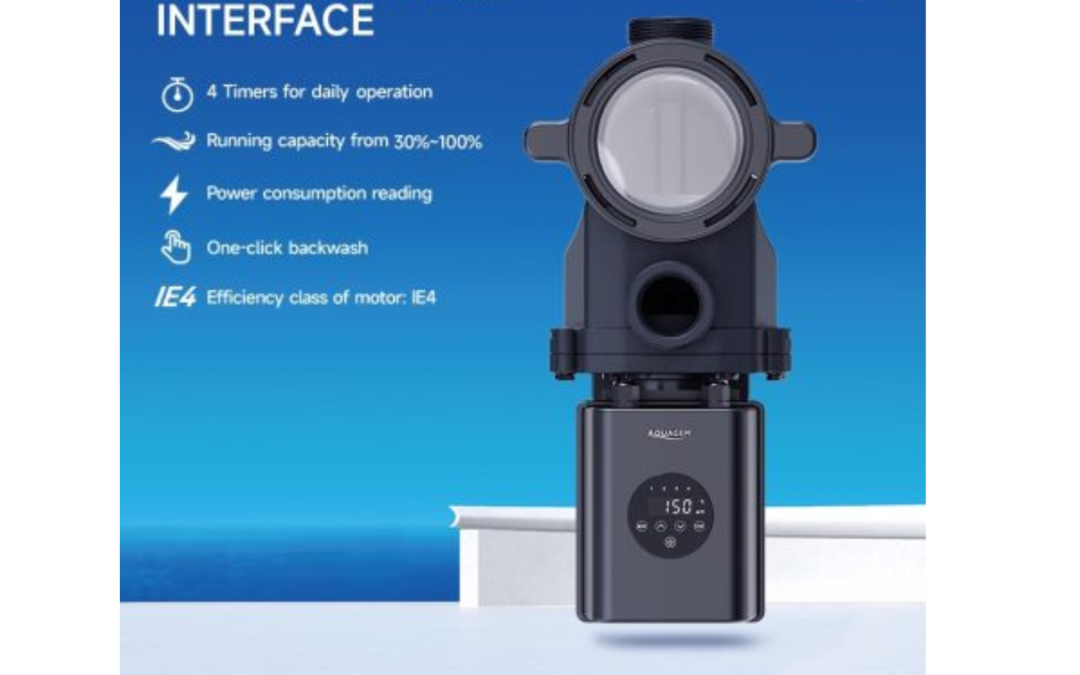Keeping your swimming pool sparkling clean in South Africa means having a reliable pool pump. This guide will help you identify when your pool pump motor might need replacement, how to go about basic pool pump repair, and what to consider if it’s time for an upgrade. We’ll also look at the different types of pumps (and popular local brands) available – with a focus on options you can buy online in South Africa. By the end, you’ll know how to choose the best pool pump for your South African pool.
Signs Your Pool Pump Motor Needs Replacement
Even the best pumps wear out over time. Pool pump motors typically last 6–10 years
, so if yours is getting old, pay attention to warning signs. Here are some common indicators that you may need a pool pump motor replacement:
• Strange or loud noises: If your pump starts screeching, grinding, or rumbling, it’s a red flag. Screeching or grinding often means the motor’s bearings are worn
. Worn bearings can make the pump motor overheat and eventually seize up. While bearings can be replaced, often a failing bearing is a sign that the motor is nearing the end of its life. Rumbling or vibration noises may also occur if the pump has come loose from its mount, causing it to rattle against the ground
poolcarespecialists.com
. If tightening the pump doesn’t solve the noise and you notice cracks or persistent rumbling, replacement is wise.
• Pump won’t start (just hums): A pump motor that hums but doesn’t actually start turning is a classic sign of a failed start capacitor or a seized motor
. One DIY test recommended by local experts is to carefully switch on the pump and give the motor shaft a quick turn with a screwdriver (through the ventilation slot at the back) – if it then kicks on, the start capacitor is likely faulty
pooldiagnostics.co.za
. Capacitors can be replaced relatively cheaply, but if the motor has seized (and manual turning doesn’t get it going), the motor will likely need replacing.
• Frequent breaker trips: When your pump keeps tripping the circuit breaker, it’s drawing too much power. Common causes include moisture in the motor, deteriorating wiring, or failing components like the capacitor or bearings
. If after addressing those issues the pump still trips the electricity, the motor windings may be shorting out – a strong sign it’s time for a new pump motor. In South Africa, where we deal with power surges and load-shedding stop-starts, an older pump motor is especially prone to electrical failure.
• Leaking water from the pump: A pool pump leak (water dripping under the pump or between the pump and motor) often means a bad shaft seal. The shaft seal keeps water away from the electric motor; if it cracks or wears out, water can seep along the motor shaft. A minor leak can be fixed by installing a new seal, but any water ingress can quickly ruin the motor bearings or windings. If your pump has been leaking for a while, the motor might be damaged. In fact, a pump running with a compromised seal can soon seize up entirely once water reaches the motor
. At that stage, a full pump replacement is safer (and often more cost-effective) than a repair.
• Low flow or poor circulation: If you notice weak water flow, no matter how much you backwash or clean the filter, your pump could be the culprit. A pump that can no longer maintain proper pressure might have an impeller that’s worn out or internal motor issues. The result is often cloudy or algae-prone water because the turnover rate is insufficient
. If the pump is older and struggling to circulate the water (especially after you’ve checked for clogs or air leaks), it may be time to replace it with a newer, more powerful model to keep your pool water clear.
• Overheating or shutting off: In summer heat, it’s normal for a pump motor to feel warm, but it should never get extremely hot to the touch. Overheating can indicate that the motor is overworking – possibly due to internal friction (like bad bearings) or electrical issues. Many modern pump motors have thermal cut-outs that shut them off when overheated. If your pump randomly turns off during the day, it could be this safety feature kicking in. Consistent overheating means the motor is on its last legs
(or there’s heavy strain in the system), and you should investigate immediately. Often, the safest bet is a replacement motor, because an overheating pump can eventually fail catastrophically (and draw high power in the meantime).
• Age of the pump: Lastly, consider the pump’s age. In South Africa’s climate, with long summers and many hours of operation, a well-maintained pump might make it 8–10 years. But after about 5–7 years, many pumps start to show their age. If your pump is nearing a decade old and showing any of the above issues (noise, leaks, electrical problems), it’s usually more sensible to invest in a new pool pump South Africa offers (with better efficiency) than to sink money into repeatedly fixing an old unit. Newer models often have improved motors that save electricity and run quieter.
If you notice one or more of these signs, don’t ignore them. A failing pump can’t properly filter your pool, and you risk green water or even damage to other equipment. It’s best to address pump problems early – either through repairs or by planning a replacement via a reputable supplier like OnlinePoolShop.co.za.
How to Repair a Pool Pump (DIY Troubleshooting)
Not every pump problem means you must rush out and buy a new one. Some issues can be fixed with a bit of elbow grease or a minor part swap. Here are practical pool pump repair tips and steps for South African pool owners:
1. Turn off power and inspect the basics: Always start by switching off the pump at the mains (for safety). Then do a basic inspection. Is the pump basket clean or is it packed with leaves? A clogged pump basket or skimmer basket can cause low flow and strange sounds. Clean out any debris from the baskets. Also check the pool’s water level – if it’s below the weir/skimmer opening, the pump may be sucking air and losing prime (a common cause of pump noise and overheating).
2. Check for air leaks on the suction side: In South Africa, many pools use a suction cleaner (like the famous Kreepy Krauly). If you see lots of bubbles in the return jets or the pump won’t prime, you likely have an air leak. Common spots are the pump lid o-ring or the union connections in front of the pump. Ensure the pump lid is on tight and the o-ring is clean and lubricated. If the o-ring is cracked or perished, replace it (these are cheap and available from pool shops and online stores). Also hand-tighten the inlet union and check the piping for any obvious cracks. Air leaks make the pump work harder and can lead to the motor running hot or dry. Simply fixing a leaky o-ring or pipe seal can restore your pump’s performance.
3. Look for blockages or impeller clogs: If the pump is on but water flow is weak, there might be a blockage. Switch off the pump and remove the pump basket. Use a torch to peek into the pump’s impeller chamber (you can usually see through the pump housing). Debris like acorns, marula seeds or eucalyptus leaves sometimes bypass the basket and get stuck in the impeller vanes. You can clear a clogged impeller by carefully reaching in with needle-nose pliers or using a piece of wire to hook out the debris (some pumps also allow you to open the wet end with a few screws for better access). Clearing the impeller can dramatically improve flow
. Remember to also backwash or rinse your filter – a very dirty filter can mimic a pump problem by restricting flow.
4. Replace a faulty capacitor: As mentioned earlier, if your pump motor is humming but not starting, a likely culprit is the start capacitor. Capacitor replacement is one of the more straightforward pump repairs. A typical pool pump capacitor is a cylindrical part housed under the hump on the motor. You can source a matching capacitor (in µF rating) from pool supply stores or electrical suppliers. Important: Turn off all power and discharge the old capacitor (it can hold a charge) before handling. With the pump unplugged, open the motor’s cover to access the capacitor and note the wiring. Swap in the new capacitor and secure the connections. Many South African pool technicians carry spare capacitors because this fix often revives a “dead” pump instantly. If you’re not comfortable doing this, an electrician or pool pump specialist can do it relatively cheaply – certainly cheaper than a new motor. (OnlinePoolShop.co.za stocks pump spares like capacitors in case you want to DIY.)
5. Fixing pump leaks (seals and gaskets): A pump leaking at the housing or where the motor meets the pump is usually due to a bad shaft seal or worn gasket. You can buy a shaft seal kit for popular pump models (e.g. Quality, Earthco, Aquamax, Speck) – these typically include a ceramic seal and perhaps o-rings
poolstore.co.za
. Replacing a shaft seal involves unbolting the motor from the pump wet end, removing the old seal, and pressing in a new one. It’s a moderate DIY job – if you’re mechanically inclined and follow instructions, it’s doable. While at it, replace other o-rings/gaskets (for the pump lid, union, etc.) that look flattened or brittle. Stopping a leak promptly will protect your motor from water damage. If you’re unsure, a pool pump repair technician can perform a seal replacement. Companies like PoolDiagnostics in Johannesburg even specialize in such repairs – they note that fixing a seal or capacitor can cure many “dead” pump issues without full replacement
pooldiagnostics.co.za
.
6. Noisy motor bearings: If your pump motor is whining or grinding, the bearings might be shot. This is a more advanced fix – it involves opening the motor end bell and pulling the old bearings off the shaft (usually with a puller tool) and pressing new ones on. New motor bearings are inexpensive, but labor can be intensive. If you have the tools and experience, you can attempt it; otherwise, consider taking the motor to an electric motor repair workshop. They can press in new bearings and sometimes refurbish the motor. However, weigh the cost – if your pump is quite old or the motor has other issues, a complete motor replacement (or new pump) might be more sensible. Tip: South African homeowners sometimes run pumps longer than 8 hours a day in summer – this continuous use can wear bearings faster, especially if the pump is exposed to rain (water ingress) or floods. So if your environment is harsh, a new pump with a fresh warranty might save headaches versus a short-term bearing fix.
7. When to call it quits: After troubleshooting, you might find multiple things wrong – e.g. a leaking seal and a humming motor and worn bearings. At that point, it’s often best to invest in a new pump. The cost of multiple parts and the time to repair can approach the price of a replacement. New pumps will be more energy-efficient and come with a warranty (often 2 or 3 years for quality brands in SA). If you do replace your pump, keep the old one – you can salvage pieces like unions or baskets as spares.
By systematically checking these areas, you can often repair your pool pump and extend its life. In many cases, a R200 O-ring or a R500 capacitor can save you from spending R4,000+ on a new unit. Always balance the repair cost against the pump’s age and efficiency, though. And remember, when in doubt, consult a professional – electricity and water can be a dangerous mix, so don’t take risks if you’re not certain. South Africa has many experienced pool technicians and also great resources like PoolDiagnostics.co.za (for detailed DIY diagnostic tips) and OnlinePoolShop.co.za (for sourcing genuine pump spares delivered to your door).
What Other Pumps to Consider When Replacing a Pool Pump
If you’ve decided it’s time to replace your pool pump, it pays to consider your options. Technology has improved, and there might be a better type of pump for your needs than the one you currently have. Here are some alternatives and upgrades South African pool owners should think about:
• Variable-Speed Pumps: These are the high-tech darlings of pool pumps. Unlike traditional single-speed pumps that run at full tilt all the time, variable-speed pumps (VSDs) can run at lower speeds when full power isn’t needed. This can save a lot of electricity – an important factor with our high Eskom tariffs and load-shedding concerns. While variable-speed models cost more upfront, they are more efficient and often pay for themselves over a few years in energy savings
. They also run quieter on low speeds, which is great for filtering overnight. Brands like Speck (BADU® Eco range) and Aquagem offer quality variable-speed pumps in South Africa. If you have a big pool or you run your pump many hours a day, a variable-speed pump is definitely worth considering to cut down on your electricity bill.
• Two-Speed or Energy-Efficient Pumps: A step down from full variable speed is the dual-speed pump, which can run on high or low. These are less common locally but some options exist. More common now are improved single-speed pumps that use efficient motors. For instance, Quality and Blu52 have newer-generation pumps (Swimflo 2 and Sunflo 2 respectively) designed with better efficiency than older models. They still run at one speed, but the motors are optimized to move water using less watts per liter pumped. If your budget doesn’t allow a variable-speed unit, look for a “5-star energy” pool pump or one labeled as energy-efficient. It will still be an upgrade over an old inefficient pump that’s, say, 10+ years old.
• Solar-Powered Pool Pumps: With South Africa’s abundant sunshine, some pool owners are turning to solar pool pumps. These are DC pumps that run off solar panels (off-grid), or AC pumps designed to be coupled with a solar power system. A solar pump can circulate your pool during the day using free solar energy – which is especially useful during load-shedding or if you live in remote areas with unreliable power. There are dedicated solar pump kits (with panels and controllers) available on onlinepoolshop.co.za in the Solar Pool Pumps section. While a solar pump might not run at night (unless you have batteries or revert to mains), it can dramatically cut day-time filtration costs and keep the pool filtered when the power is out. This is an attractive option in sunny provinces like Gauteng, Limpopo, and KZN.
• Consider pump size adjustments: When replacing your pump, ensure you choose the right size (power rating) for your pool. It’s not always a case of “bigger is better.” For example, if you had a 0.6 kW pump and your pool was always clean, you might not need to jump to 1.1 kW – an oversized pump will just use more power and could cause your filter to clog faster. Conversely, if you’ve added features like a solar heating system on the roof or a waterfall feature, you might need a stronger pump or an auxiliary pump. Many South African pools built decades ago ran on 0.45 kW or 0.6 kW pumps, which saved electricity but sometimes struggled with suction cleaners in larger pools. Upgrading from a 0.6 kW to a 0.75 kW (1.0 HP) pump is a common move to improve circulation and cleaner performance in a pool that was a bit under-pumped. Just make sure your sand filter can handle the higher flow (most 3-bag filters are fine with 0.75 kW). If you’re unsure, consult with the experts at OnlinePoolShop.co.za or your local pool store – they can advise if a bigger pump is needed or if a like-for-like replacement is best.
• Pump and filter combos: While thinking about pumps, it’s smart to consider your filter’s condition too. The pump and filter work as a team
. If your sand filter is undersized or old, a new pump might overpower it (or the filter could be the real cause of water problems). Sometimes pool owners replace both pump and filter together as a fresh start – for instance, getting a combo deal on a 0.75 kW pump with a matching 3-bag filter. Onlinepoolshop.co.za often has bundle deals on pump+filter sets (“combi units”), which can save money and ensure you have a well-matched system. This isn’t an other pump per se, but it’s worth considering the filtration holistically when doing a major equipment upgrade.
• Brand upgrades: If you weren’t happy with your last pump’s longevity, consider switching brands for the replacement. For example, if a generic or no-name pump gave only 2 years of service, you might opt for a more established brand like Speck or Quality for better peace of mind (Speck and Quality pumps are known for solid build and good warranty support in SA). On the other hand, if you had an old heavy-duty pump that was overkill and costly to run, you might replace it with a newer Blu52 Sunflo 2 or Earthco E-Series pump that is right-sized and efficient. The South African market has a range from budget-friendly to premium pumps, so weigh the initial cost vs expected lifespan. Generally, local brands like Quality, Earthco and Speck have good spare parts availability (seals, impellers, etc.) in South Africa
, which means even years down the line you can service them instead of full replacement. This is something to think about when choosing your new pump – availability of parts and service can extend the pump’s useful life.
In short, don’t automatically buy the exact same pump you had without exploring these options. Advances in pump technology, plus South Africa’s unique challenges (power supply, energy costs, climate), mean you could benefit from an upgraded type of pump. A bit of research can lead you to a pump that saves you money, runs quieter, or better suits your pool’s needs. Be sure to compare features on OnlinePoolShop.co.za – they list detailed info on each pump (flow rates, energy usage, pool size suitability) to help you make an informed decision.
Types of Pool Pumps Available on OnlinePoolShop.co.za
One great thing for South African pool owners is that you can find all types of pool pumps online, especially on a comprehensive site like OnlinePoolShop.co.za. This site is a one-stop online store that offers a huge range of pool equipment with delivery across SA. Let’s break down the main categories of pool pumps you’ll encounter, and highlight what’s available:
A modern Blu52 Sunflo 2 pool pump (0.75 kW) – a single-speed pump designed in South Africa for local conditions. Today’s pool pumps, like this Blu52, feature efficient motors and quiet operation to run 52 weeks a year with minimal hassle.
Single-Speed Pool Pumps: These are the traditional workhorses found in most pools. Single-speed pumps run at a fixed speed (typically 2850 RPM on 50Hz power in SA). They come in various power ratings, usually from about 0.45 kW up to 1.5 kW for residential models. OnlinePoolShop has a wide selection of single-speed pumps in all the popular brands. For example, you’ll find Speck single-speed pumps (the BADU Porpoise and Galaxy ranges), Quality single-speeds (Swimflo 2 series), Earthco pumps (EartheCo’s E-Que and Rapid series), Kreepy Krauly pumps, and Zodiac/Baracuda pumps. These all essentially do the same job – circulate water – but you can choose a brand and size that fits your pool. Single-speed pumps are generally the most affordable upfront. If you’re replacing an old pump with a new single-speed, you can likely find an equivalent model on the site. For instance, Speck’s BADU Porpoise 0.75kW pump is a common choice for medium pools (Speck is a German brand but very popular in SA, known for quality). Quality and Earthco single-speeds are locally designed pumps that tend to be budget-friendly while still offering solid performance – great if you want value for money. The OnlinePoolShop website conveniently groups pumps by brand and type, so you can easily browse “Quality Pool Pumps” or “Speck Pool Pumps” etc., and compare. They even note the recommended pool sizes (e.g., “Suitable for pools up to 60,000L” on a 0.75 kW pump
onlinepoolstore.co.za
) which takes the guesswork out of shopping.
Variable-Speed and Dual-Speed Pumps: If you’re interested in the energy-saving models, check out the VSD (Variable Speed Pumps) category on OnlinePoolShop. Here you’ll find pumps like the Speck BADU Eco Touch/Eco VS and Aquagem inverter pumps. Variable-speed pumps come with a digital controller allowing you to set different speeds or flow rates. On the site, these might be listed with their full model names (for example, BADU® Eco Pro 0.75kW VSD). The site also sometimes carries Pentair and DAB variable-speed pumps – these are premium imported brands (Pentair’s IntelliFlo series is well known globally, and DAB from Italy has ultra-quiet high-end pumps). Variable-speed pumps are perfect for those looking to buy pool pumps online in South Africa with an eye on long-term energy savings. OnlinePoolShop provides detailed descriptions for these, often noting estimated savings or special features. Dual-speed pumps are less common, but occasionally models like the Speck BADU Eco Dual might appear – allowing a high/low toggle. In any case, if efficiency is your goal, filter the shop by the “VSD Variable Speed” tag to see what’s in stock. Yes, these pumps have a higher price, but remember you might recoup that in 1–2 summers of electricity savings.
Solar Pool Pumps: Under the “Solar Pool Pumps” section, you’ll find specialized pumps meant to run on solar power. For example, there are Lorentz solar pumps and others that come with DC controllers. OnlinePoolShop.co.za often stocks kits or at least the pumps which you can integrate with solar panels. These are fantastic for rural properties or anyone trying to make their pool off-grid. Keep in mind, a solar pump’s flow will depend on sunlight intensity, so they often are used in conjunction with a solar controller that can optionally switch to mains when needed. The site might have, for instance, an 800W Solar Pool Pump kit capable of handling a medium-sized pool. If you’re interested in solar, it’s a good idea to chat with the OnlinePoolShop support or read their blog – they sometimes post guides on sizing a solar pool pump for South African sun conditions.
Popular Brands and Models: To give you a feel, here are some top pool pump brands you’ll see on OnlinePoolShop and what they offer:
• Quality – A South African brand offering the Swimflo 2 range of pumps (0.55kW, 0.75kW, 1.1kW). These pumps are designed locally and come with great features like twist-lock lids and thermal overload protection. They are affordable and come with around a 2 to 3-year warranty. Quality pumps are known as reliable “no-frills” choices – they do the job without breaking the bank. (Quality is also the company behind certain Blu52 pump models, as they partner on some products.)
• Speck – Speck Pumps, originally from Germany, have been in South Africa for decades (manufactured under license here). The BADU series is famous – if you’ve heard of “Badu jet” or “Badu porpoise,” those refer to Speck’s models. On the site you’ll find Speck BADU Porpoise pumps in various sizes (these cover most home pool needs) and the BADU Galaxy and BADU Eco ranges for high performance and efficiency. Speck pumps typically cost a bit more, but many pool owners and builders swear by them for their durability. They are a great choice if you want a premium single-speed pump or a reliable variable-speed unit with local support.
• Earthco (EartheCo) – A local brand focusing on robust pool equipment. Earthco has the E-Que pump line and the Rapid pump line. For example, an Earthco E-Que 0.75kW pump is a popular seller for small to medium pools, often marketed as a “high-flow, high-strength nylon pump”. Earthco pumps are designed to handle our tough conditions (UV exposure, long run-times). They often are priced competitively against Quality pumps. Many pool techs consider Quality, Earthco and Speck as the top-tier trio in SA for pumps
poolstore.co.za
– each with slightly different strengths, but you won’t go wrong with any of them. Earthco’s Rapid pumps in 0.6kW and 0.75kW are known as excellent replacement pumps if you’re on a budget yet want something that lasts.
• Blu52 – Well-known in SA for pool chemicals (the Blu52 weekly maintenance kit), Blu52 also introduced the Sunflo 2 pool pumps in recent years. These bright blue pumps (see image above) are locally manufactured to suit South African conditions, with low noise and modern materials
takealot.com
. Blu52 pumps come in sizes like 0.55kW, 0.75kW, 1.1kW and are often sold as part of pool renovation packages. If you’re loyal to the Blu52 brand of products, you can now have a Blu52 pump to match. OnlinePoolShop lists Blu52 pumps with their full specs – for instance, the Sunflo 2 0.75kW has an all-plastic body, stainless shaft, and is rated for pools up to 60k litres
onlinepoolstore.co.za
. Blu52 is relatively new in the pump space but backed by Fluidra (a global pool company), so they’ve quickly gained trust in the market.
• Kreepy Krauly / Pentair – Kreepy Krauly is synonymous with pool cleaners, but the brand (now under Pentair) also offers pumps. OnlinePoolShop has a category for Kreepy Krauly pool pumps, where you might find models like the Pentair WhisperFlo or IntelliFlo (variable speed) pumps. These are high-end products; for example, the Pentair IntelliFlo VSF is one of the most advanced pool pumps globally (and carries a price to match). While not everyone will need such a pump, it’s great that South Africans can purchase these world-class pumps online now. They offer ultra-efficiency and are suited for large or luxury pools, or if you simply want the best and quietest pump money can buy.
• Other brands: The site also features AquaMax pumps, DAB pumps (from Italy), Swimquip pumps, and more. AquaMax is another local brand comparable to Quality/Earthco in pricing. DAB is an imported brand focusing on very efficient pumps (their 0.55kW is known to push as much water as some 0.75kW competitors, due to an excellent design). Swimquip is a tried-and-tested brand especially for older pools – many pools built in the 80s and 90s had Swimquip pumps, and replacements are still available. In short, OnlinePoolShop.co.za’s catalog covers everything from entry-level to premium, and from old-school to the latest tech.
With such variety, you have the freedom to pick a pump that perfectly fits your requirements. The product pages on OnlinePoolShop are very informative – detailing things like flow rates, head heights, recommended pool sizes, warranty terms, and including clear photos. Plus, you can filter or search by keywords like “0.75kW” or “variable speed” to compare similar models across brands. And if you need guidance, their customer service is just a call or email away to help you decide. By using a trusted online retailer, you also ensure you’re getting genuine products (no knock-offs) with manufacturer warranties.
Below is a quick comparison table of some top-selling pool pumps in South Africa, including the four popular brands we’ve discussed, their typical power rating, and the ideal pool size they cater to:
Brand (Series) Model / Power Ideal Pool Size
Quality (Swimflo 2) 0.75 kW Single-Speed up to ~60,000 L pools
onlinepoolstore.co.za
Speck (BADU Porpoise) 0.75 kW Single-Speed up to ~50–60,000 L pools (standard home pool)
Earthco (E-Que Series) 0.75 kW Single-Speed up to ~60,000 L pools
Blu52 (Sunflo 2) 0.75 kW Single-Speed up to ~60,000 L pools
onlinepoolstore.co.za
Table: Comparison of popular 0.75 kW pool pumps from Quality, Speck, Earthco, and Blu52. All are suitable for an average-size residential pool (~8 × 4 m, 50,000–60,000 litres). Smaller 0.5–0.6 kW models are available for splash pools, and larger 1.1 kW models for very big pools (~80–90k L). Always match the pump power to your pool volume for optimal results.
As you can see, the 0.75 kW (1.0 HP) range is a sweet spot – each of these pumps can handle most backyard pools in SA. The choice often comes down to brand preference, price, and features. For example, the Quality and Earthco pumps might be the most budget-friendly options, while Speck might charge a premium for its brand and slightly higher flow rate, and Blu52 positions itself with a quieter, modern design appeal. All these brands and more are readily available on onlinepoolshop.co.za, which means you can conveniently compare and purchase the exact model that meets your needs.
Tips for Choosing the Right Pool Pump for Your Pool
Finally, let’s talk about how to make sure you choose the right pool pump. Replacing a pump is an investment – you want to get it right so that your pool stays clean and healthy without unnecessary cost or hassle. Here are some practical tips tailored for South African pool owners:
1. Size your pump to your pool volume: The pump’s flow rate should be able to circulate all the water in your pool in a reasonable time (typically 4–8 hours for domestic pools). First, figure out your pool’s volume. You can calculate volume in litres by measuring the pool (length × width × average depth × 1000)
. For example, a 8m x 4m pool with an average depth of 1.5m is 8×4×1.5 = 48 m³ = 48,000 L. You’d want a pump that can move at least 48,000 L in 8 hours, i.e. 6,000 L/hour (6 m³/h). Most 0.6–0.75 kW pumps have flow rates around 8–12 m³/h depending on head pressure, so they would cover that example. If you have a larger pool (say 75,000 L), you might lean toward a 0.75 or 1.1 kW pump, whereas a very small pool (20,000–30,000 L) could do fine with a 0.45–0.6 kW pump. Each pump on OnlinePoolShop lists an approximate “suitable for pools up to X litres”, which is extremely helpful – use those as a guideline. It’s wise to err a bit on the higher side (you can always run a larger pump for fewer hours per day). But don’t go wildly oversized – a too-powerful pump can cause issues like channeling in the filter or excessive pressure.
2. Match the pump to your filter: Check your sand filter’s size (capacity and design flow rate). Filters in SA are often described by “bag” (the number of 40kg sand bags it takes) or inches diameter. Common domestic ones are 2-bag, 3-bag, or 4-bag filters. As a rule of thumb, a 2-bag filter suits small pumps (0.45–0.6 kW), a 3-bag suits medium pumps (0.75 kW), and a 4-bag suits larger pumps (1.1 kW). If you pair a small filter with a big pump, the water might rush through too fast and not get properly filtered (and could even damage the filter internals by high pressure)
mbondpumps.co.za
. Conversely, a tiny pump on a huge filter might not push enough water to clean the pool well. So it’s important to balance the pump and filter. For example, if you’re upgrading from a 0.6 to 0.75 kW pump, ensure your filter is at least a 3-bag (or around 21″ tank) and in good shape. If not, consider upgrading the filter too (or choose a smaller pump). The product specs on onlinepoolshop.co.za often recommend an “Optimal filter pairing” (e.g. “pairs best with a 3-bag sand filter”
onlinepoolstore.co.za
) – follow those recommendations to get the best performance and water clarity.
3. Consider your pool usage and features: Every pool is different. Do you have a suction cleaner that runs off the pump, like the typical Kreepy Krauly? If so, you need a pump strong enough to keep it moving. Most 0.6–0.75 kW pumps will drive a cleaner on a medium pool; for a very large pool or long plumbing runs, 0.75–1.1 kW is safer. Do you have solar heating panels on the roof? That adds head (lift), so you might bump up the pump size or use a booster pump. Water features (cascades, spa jets) similarly might require more flow. Make a list of what the pump needs to handle. If it’s just filtration, you can go with the basic sizing. If it’s multi-duty (cleaner + solar + maybe a fountain), either oversize the main pump a bit or install separate pumps for separate tasks (some folks run a dedicated small pump for solar or water features so the main filtration pump isn’t overburdened). Also, think about how often you use the pool. Year-round pools (like in Durban or heated pools) will need pumping even in winter, so an efficient pump pays off. If you mostly shut down in winter (common in the highveld), a single-speed is fine and you just run it less in off-season.
4. Efficiency and electrical considerations: South Africa’s electricity is expensive and sometimes unreliable. If you can afford it, investing in an energy-efficient pump or a variable-speed pump is a smart move. Over a few years, the savings on your electricity bill can outweigh the higher purchase price. Also, a pump that draws fewer watts is easier on backup power systems. For instance, during load-shedding, you might run a pool pump on an inverter or generator – a smaller or variable-speed pump can run at lower power and be inverter-friendly, whereas an old 1.1 kW pump might trip your backup system. If you have or plan to get solar PV at home, coordinate your pump choice with that: maybe a variable-speed pump that you can program to run in midday when solar output is high. Check the rated power consumption (amps or watts) of the pump. A 0.75 kW modern pump might draw around 4 to 5 amps, whereas an older one could draw 6+ amps for the same flow. Choosing a pump with a lower current draw can also reduce strain on your electrical circuits (especially important if your pool DB board is shared with other appliances or if you have an older home electrical setup).
5. Reliability, warranty and support: Look at the warranty offered – many good pumps come with a 2-year warranty, and some (like Quality’s Swimflo 2) offer 3 years
onlinepoolstore.co.za
onlinepoolstore.co.za
, which is a great vote of confidence by the manufacturer. Also consider the availability of spares. Brands like Speck, Quality, Earthco, Zodiac etc. have good support in South Africa. Down the line, if your pump needs a new lid, basket, or mechanical seal, you’ll easily find those parts online or at pool shops. This means your pump can be repaired and won’t have to be tossed out for a minor issue. When buying from OnlinePoolShop, you’re also getting genuine products with access to their customer support if any issues arise. Check if the model you’re eyeing has a service center nearby (for Speck and Quality, most big cities have authorized service agents). Also, read reviews if available – sometimes on the site or their Facebook page customers share experiences. For example, you might learn that “this pump is quiet but runs hot” or “that pump priming is a bit slow but it’s very efficient once running” – these insights can tip your decision.
6. Budget vs long-term cost: Finally, balance your budget with the long-term costs. If you’re on a tight budget, there are plenty of affordable pump options (Quality, Earthco, Aquamax etc.) that will keep your pool clean just fine. On the other hand, if you can spend a bit more now, you might opt for a pump that saves you money over time (like a variable-speed or a more robust brand that lasts longer). Think of it like buying a car – you wouldn’t just buy the cheapest one if it guzzles fuel or might break down soon. Sometimes spending a little more upfront for a better pump yields savings in electricity, repair bills, and headaches later. All the pumps listed on OnlinePoolShop.co.za show the price, so you can easily compare. Also factor in delivery (the site often offers free shipping for orders above a certain amount) and installation costs if you’re not fitting it yourself. If you’re unsure, ask a professional or the supplier – they might say for example: “For your 50kL pool, a 0.75kW is enough. The variable-speed is R2000 more, but will save you R500+ in electricity each year”. With that info, you can make an informed choice that suits your situation.
By considering these factors – pool size, filter match, pool features, efficiency, and support – you’ll select the right pool pump and enjoy a trouble-free pool. Remember, a well-chosen pump not only keeps your swimming pool water healthy, but also operates quietly in the background without wasting energy or money. If in doubt, reach out to the experts at OnlinePoolShop.co.za or a local pool professional; provide them details about your pool and current equipment, and they can recommend options.
In conclusion, maintaining a pool in South Africa is much easier when you have the correct pump in place. Whether you’re noticing warning signs of a failing motor, attempting a DIY repair, or shopping for a brand-new pump, use the tips and information above to guide you. South African pool owners have access to some of the best pool pumps on the market – from hardy locally-made models to cutting-edge smart pumps – and you can get them with just a few clicks on sites like onlinepoolshop.co.za. Here’s to crystal-clear pools and efficient, hassle-free pumping! Enjoy your swimming season, and rest easy knowing your pump system is optimized for your needs.
There’s nothing like finding a perfect blouse that’s classy enough to wear to the office, but also stunning enough to dress up for a night out. I’m obsessed with moody green tones for fall and was so happy when I found this silky billowy sleeved dream! ADEAM has some beautiful new pieces that are perfect for any fall occasion and are staple pieces you’ll have in your wardrobe forever.
